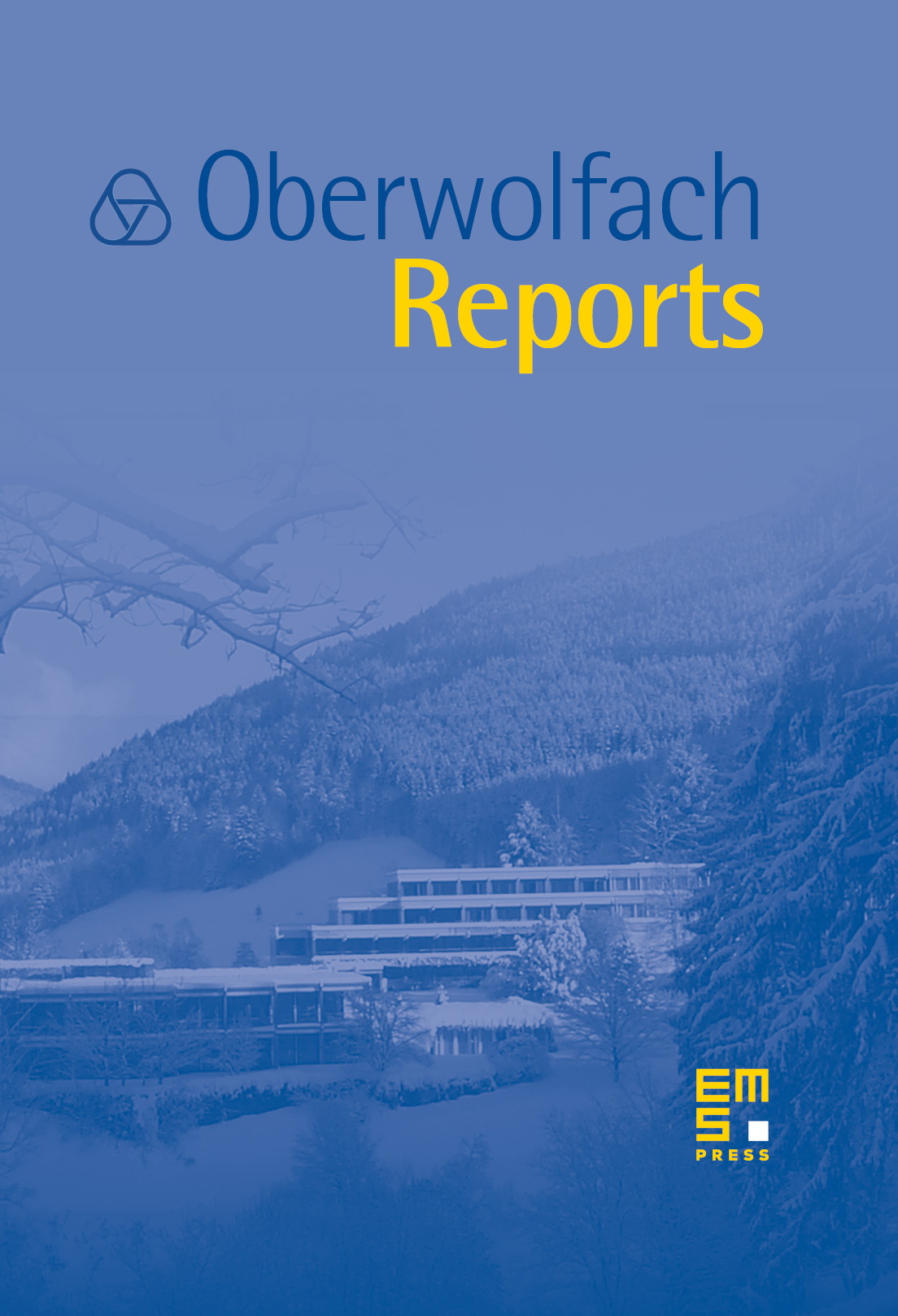Analysis and Numerics for Rate-Independent Processes
Gianni Dal Maso
SISSA, Trieste, ItalyGilles A. Francfort
Université Paris-Nord, Villetaneuse, FranceAlexander Mielke
Weierstrass Institut für Angewandte Analysis und Stochastik, Berlin, GermanyTomáš Roubíček
Charles University, Praha, Czech Republic

Abstract
This conference brought together the mathematicians and engineers concerned with the study of rate-independent processes. The topics involved the physical and mechanical modeling, the analytical treatment as well as the development of numerical algorithms and the computational aspects.
Rate-independent processes occur when a system undergoes loadings varying on a time scale much slower than the internal relaxation times of the system. However, the system still stays in metastable states and does not find its thermodynamical equilibrium because of internal frictional processes. There are many well-established macroscopic theories, which show good agreement with experiments, for instance the classical theory of linearized elastoplasticity. This theory has been established a century ago, but its mathematical foundations were only understood 30 years ago using the theory of convex analysis and variational inequalities. Another classical driving theme in this area is the theory of Coulomb friction between rigid or elastic bodies.
Within the last decade similar models have been developed in several areas of mechanics of solids, some of them on a phenomenological basis and others relying on an improved understanding of the microstructures. Such areas include multifunctional or active materials (e.g., shape-memory alloys, ferromagnetism, magneto- and electro-strictivity) and inelastic processes in solids (e.g., elastoplasticity, damage, delamination, fatigue, brittle fracture, crack growth).
Although many of these models are used in engineering, their mathematical understanding is insufficient and efficient numerical algorithms for the computation of approximate solutions are few. The main problem is the inherent nonsmoothness of the modeling because of rate independence.
We discussed a new approach based on an energetic formulation, which provides a broad basis for treating quite general models using topological, geometrical and measure theoretical methods that do not require a Banach space structure. It was shown in various presentations that this approach allows one to go beyond linearized elastoplasticity and to treat fully nonlinear mechanical problems, like crack formation and growth, or elastoplasticity with softening.
Finally, the modeling of the formation and evolution of microstructures was debated in several talks and gave rise to a better understanding of the physical and mathematical underlying principles.
The specific methods discussed were:
- energetic formulation of rate-independent processes
- variational and quasi-variational inequalities
- geometric evolution on metric spaces and its connections to gradient flows for non-convex energies
- techniques from functions of bounded variations and deformations
- regularizations techniques: viscous regularization in time and gradient regularization in space
- justification of rate-independent models from viscous systems with wiggly energies (stochastic potential)
- time-incremental discretizations, discontinuous Galerkin method in time
- space discretizations: conforming and nonconforming finite elements
- regularization of nonsmoothness: phase-field approximations for cracks
- -convergence and relaxation of ill-posed problems
- deriving evolution equations for microstructures and in materials
- Young measure techniques for spatial and temporal oscillations
The specific applications discussed were:
- elastoplasticity with hardening or softening, dislocation plasticity
- damage evolution in solids and structures
- crack propagation in brittle materials
- hysteretic effects in shape-memory alloys (martensitic transformations)
The continuous downpour of Black Forest Rain created a cosy atmosphere that fostered the interaction between the different mathematical and engineering communities.
Cite this article
Gianni Dal Maso, Gilles A. Francfort, Alexander Mielke, Tomáš Roubíček, Analysis and Numerics for Rate-Independent Processes. Oberwolfach Rep. 4 (2007), no. 1, pp. 591–666
DOI 10.4171/OWR/2007/11